MAJAVA WORKSHOP, 28.08.2025
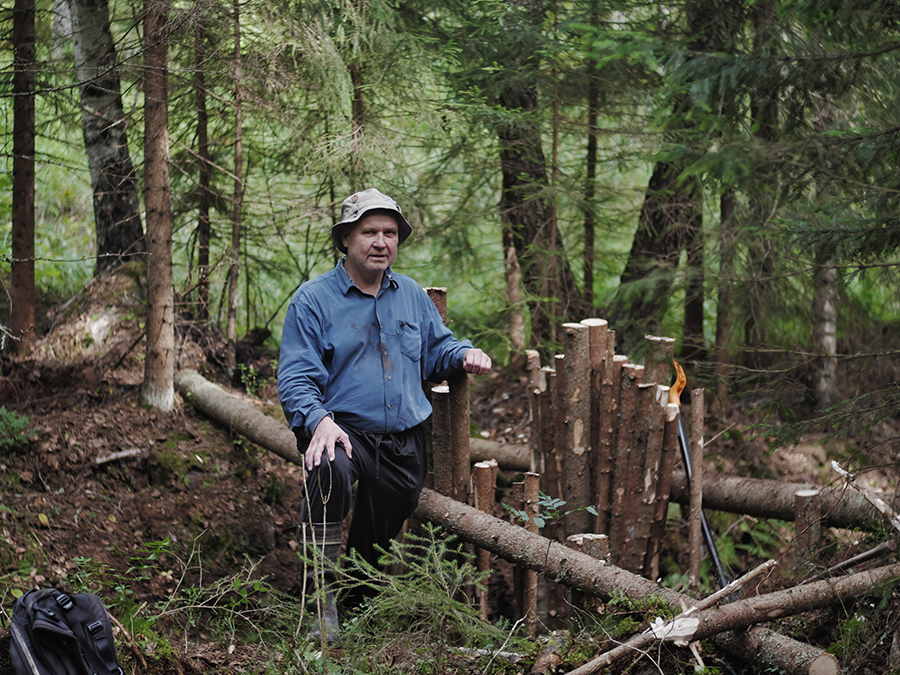
1. Heikki Susiluoma was at Pässilampi for the second time, teaching how to build a proper dam in a swamp area. At the end of this site you will find a video where Susiluoma explains in more detail what we did and why.
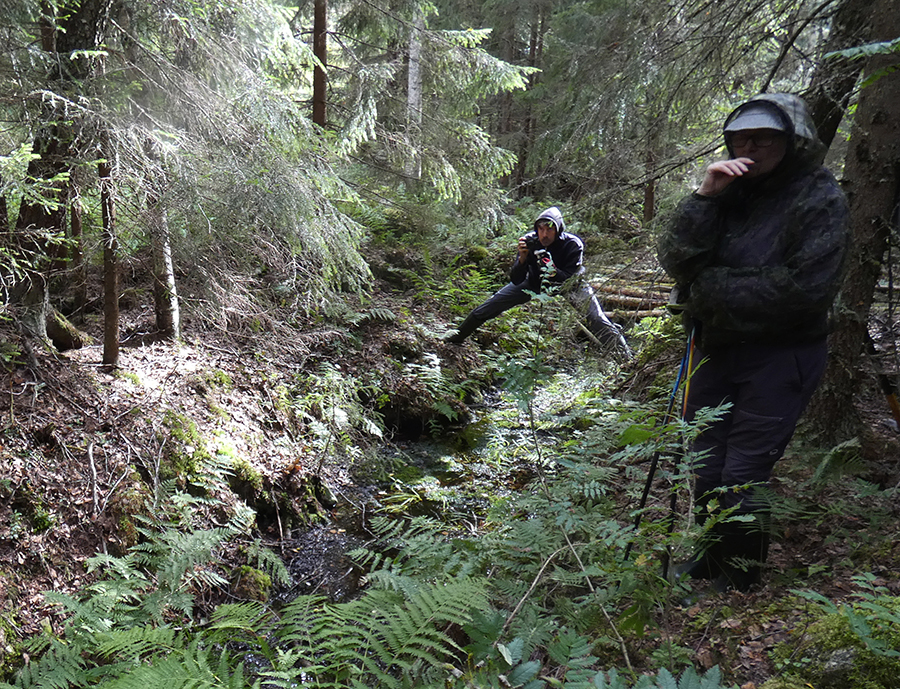
2. Matthias Fritsch made a documentation of our workshop, the video and all the pictures (except this one) were taken by him.
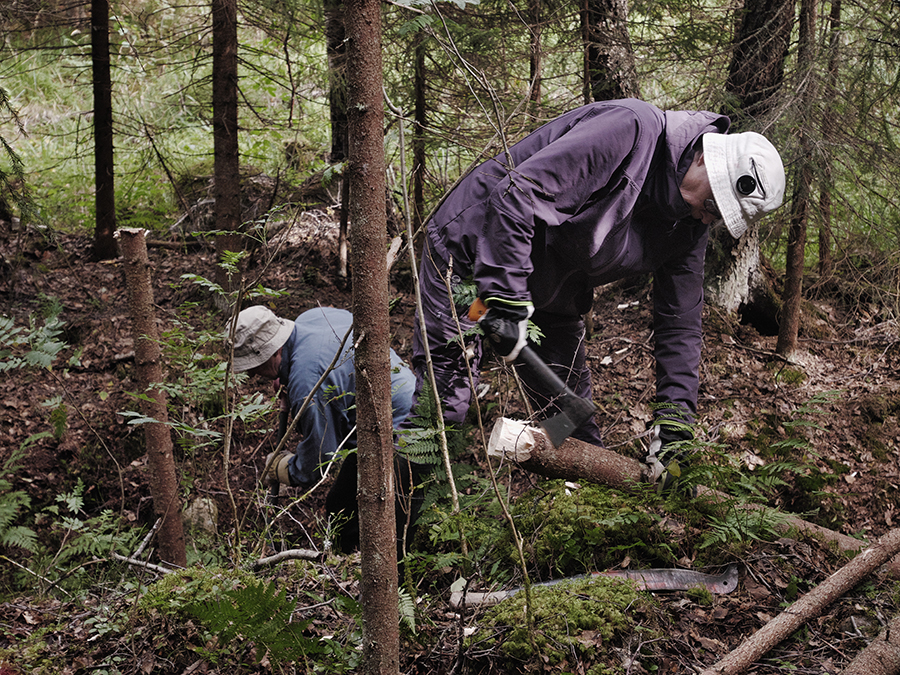
3. We started to work as soon as we had found a suitable place. Expert Matti Aalto had first searched for possible dam sites using mapping and marked them on the map. Here Susiluoma then made a more precise decision about the location of the dam.
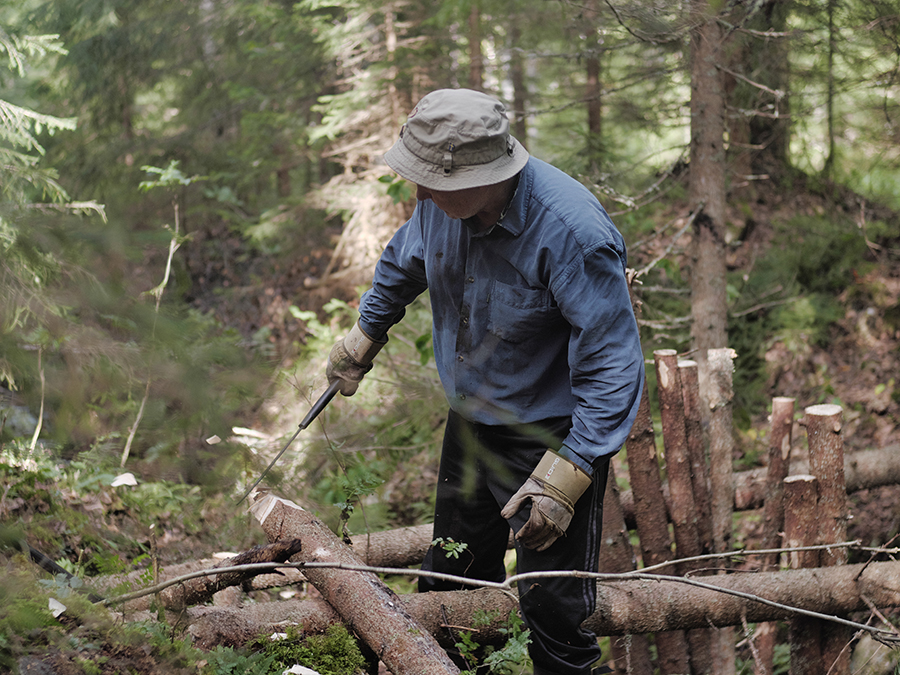
4. The trunk of a spruce needs to be sharpened so that it sinks more easily into the ditch.
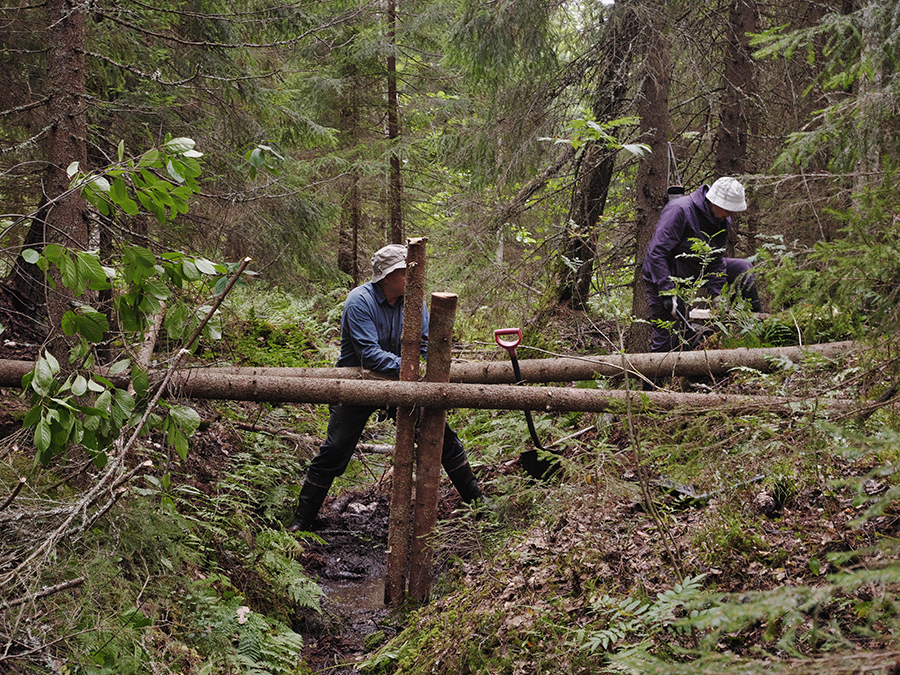
5. we cut 2 strong spruces for the sides, and then arranged shorter ones as a wall.
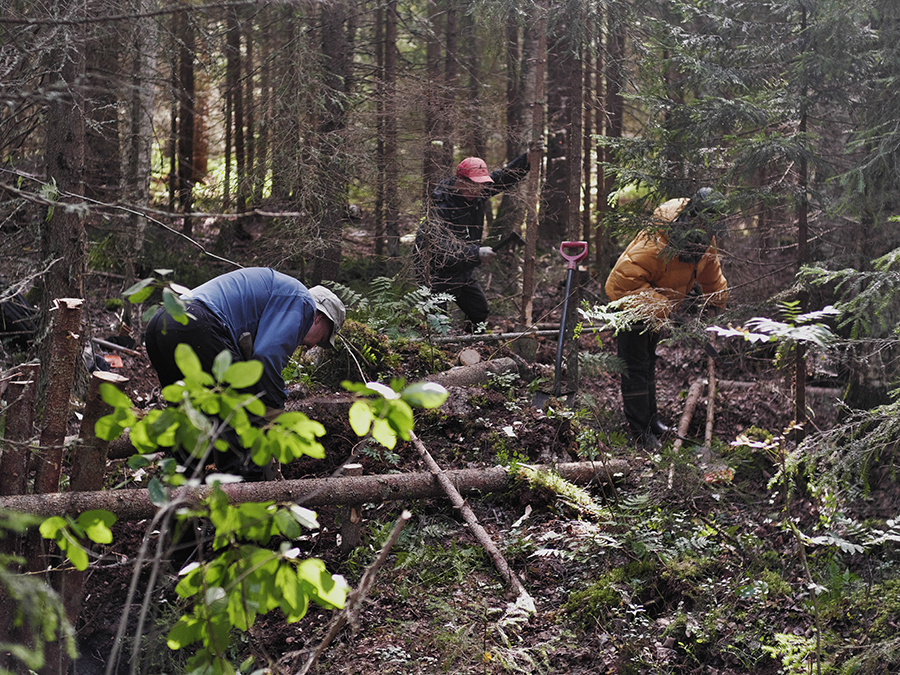
6. We were all diligent under Susiluoma's instructions, there was only one cordless saw, but fortunately also some other tools.
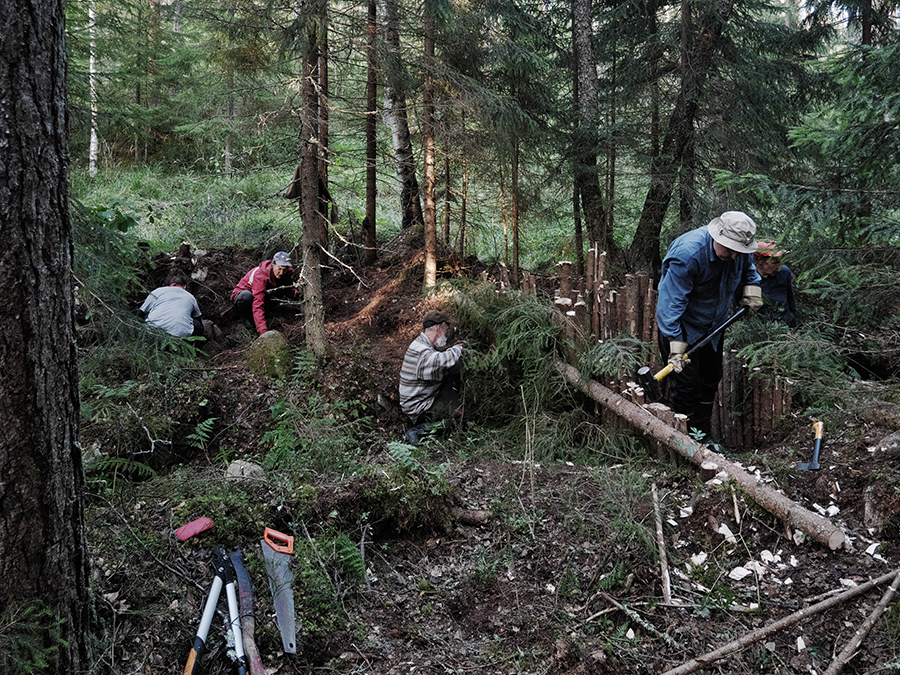
7. Sledge-hammer is an important tool, with which the trunks are hammered into the ditch bottom. At the same time, we started shoveling suitable soil to fill the dam. Sand, clay and rotted peat would be the best materials, but not always so easy to find among the roots of trees.
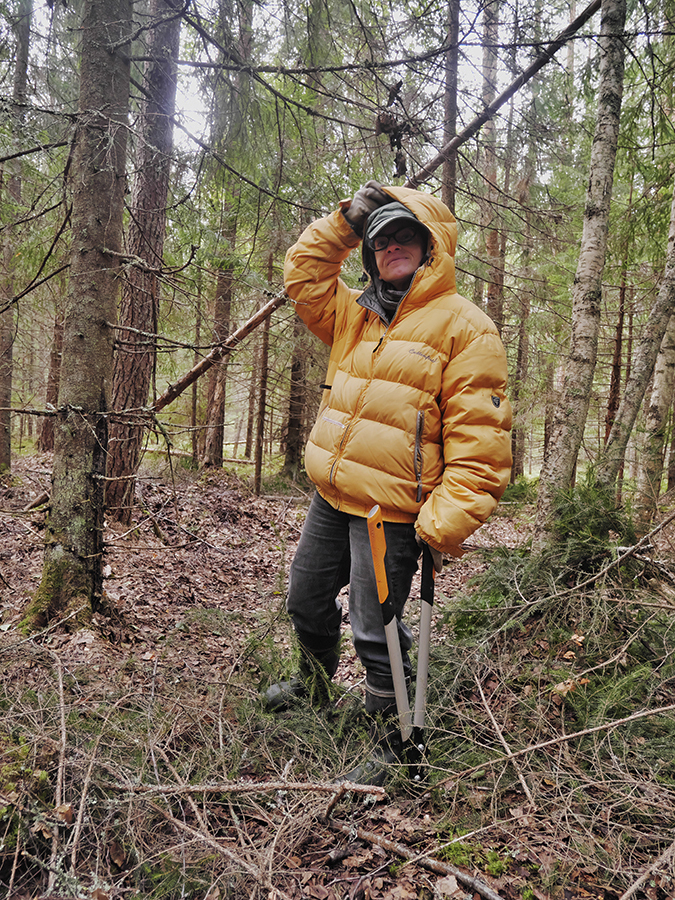
8. Daphne and clearing shears.
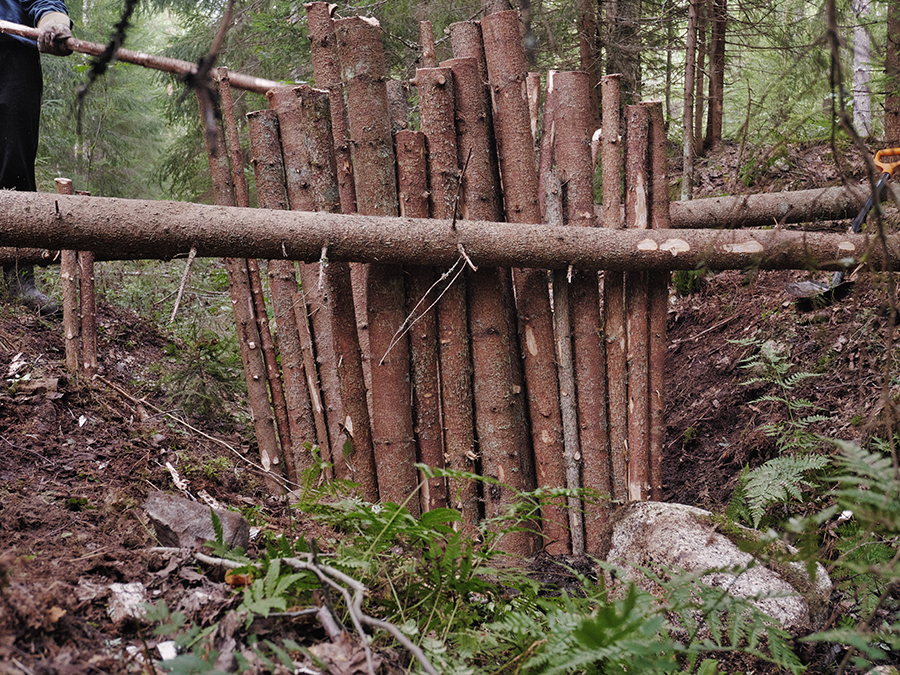
9. Dam wall.
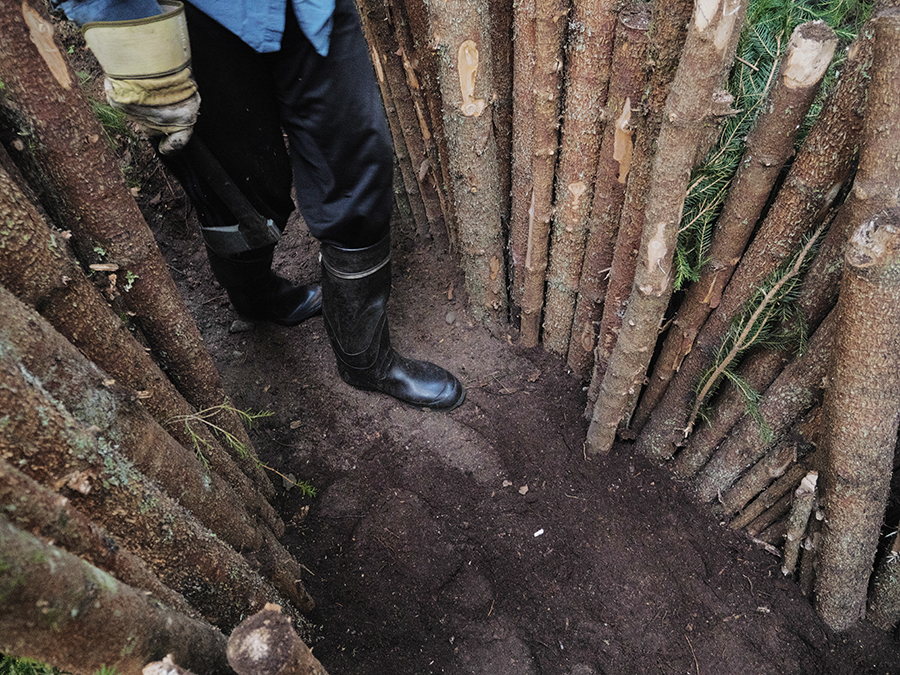
10. It's a good idea to trample it every now and again to compact it.
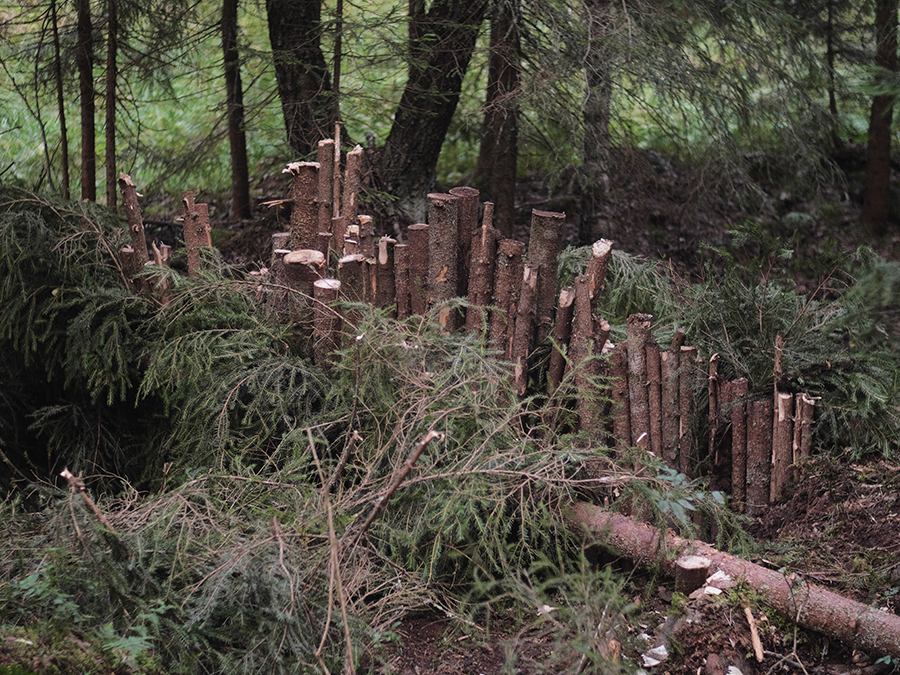
11. The walls of the dam have been caulked with branches.
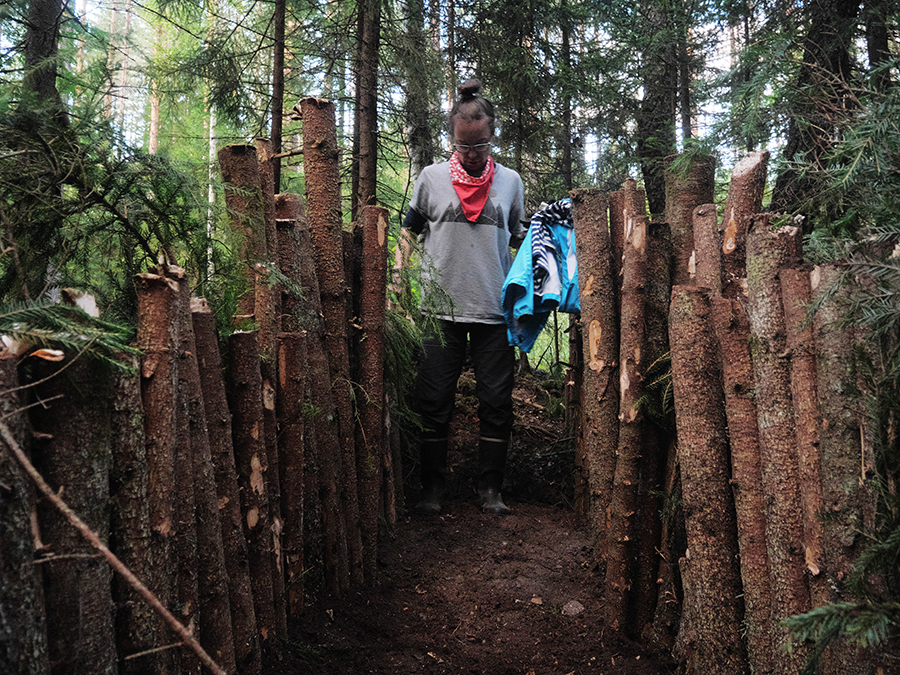
12. but more fill-soil would be needed.

13. We threw the rest of the branches into the ditch to protect the dam from the flow, and there was still a pine of stones waiting next to the dam. Then, when the soil layer of the dam is high enough, we can put stones on top as weight. But never put rocks bigger than a child's fist in the soil! (H.S)
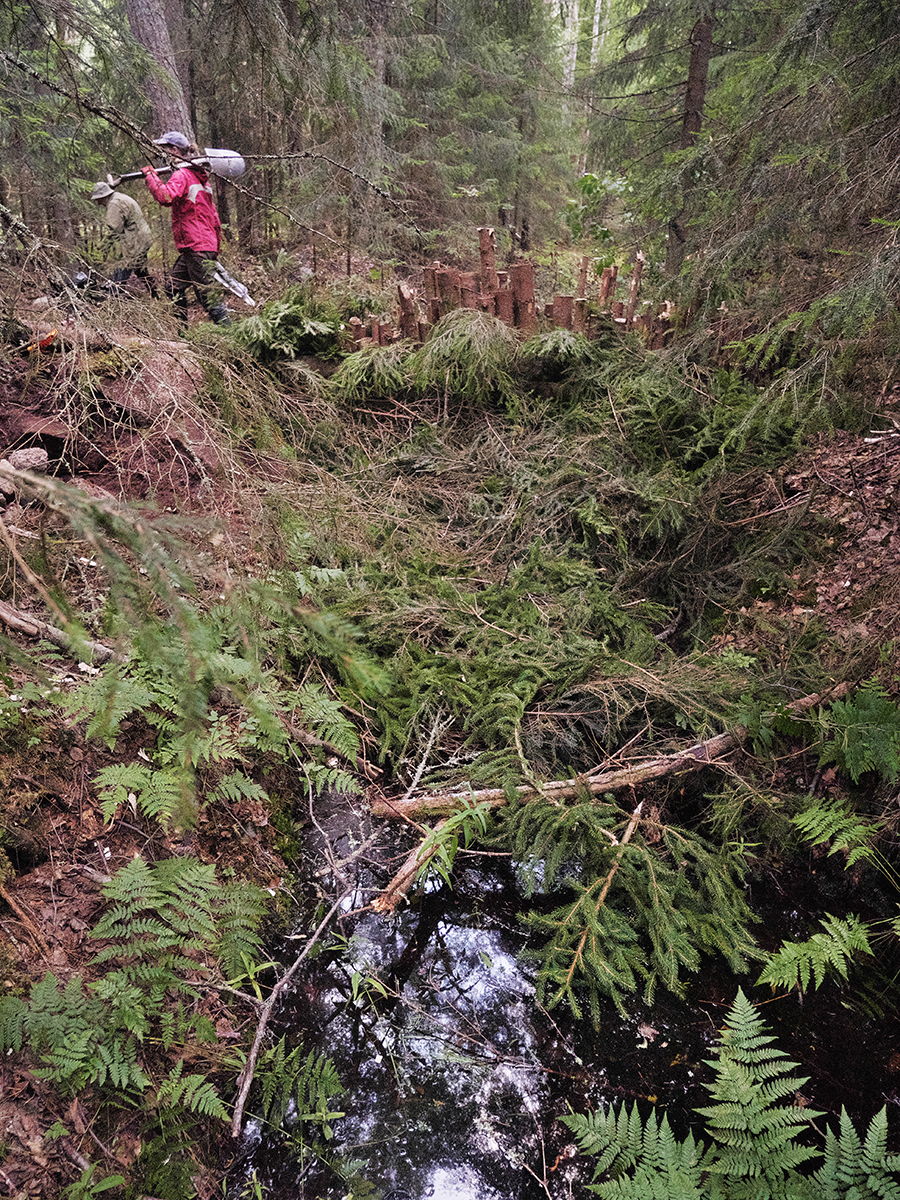
14. At eight o'clock in the evening we were tired and decided to go home. We didnt have time to heat up the smoke sauna, however, there was one lunch break in the afternoon.
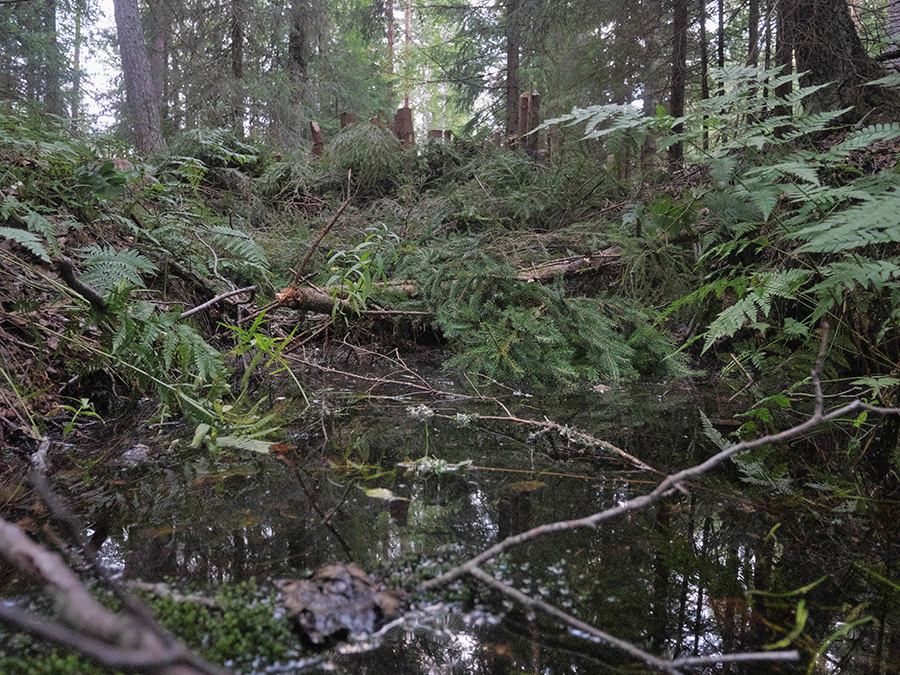
15. On the Pässilampi side, the water level in the ditch may have started to rise slightly, as the dam blocked the flow.
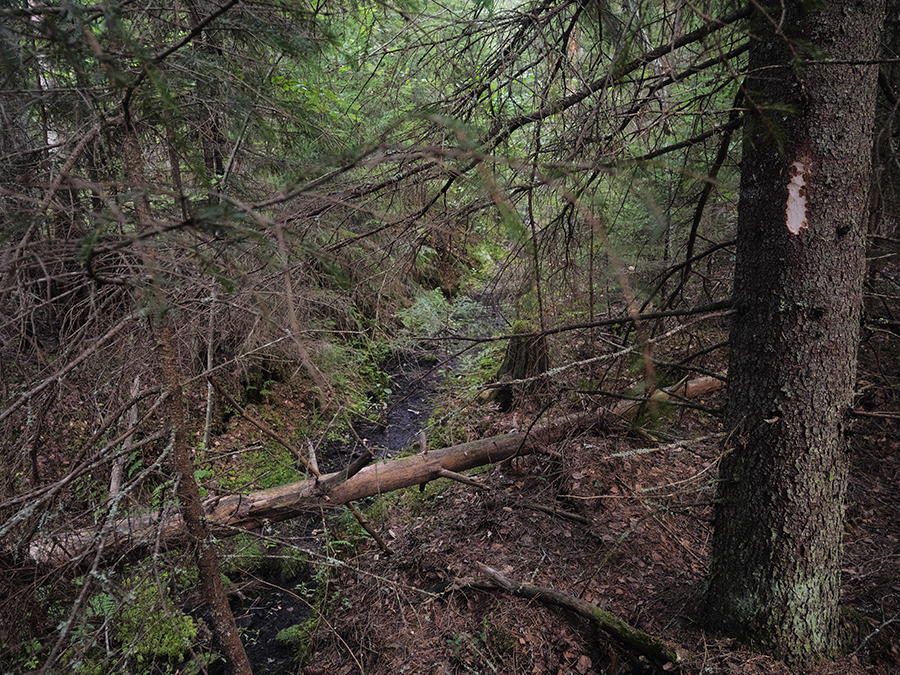
15. Here, Susiluoma marked the location of the next dam.